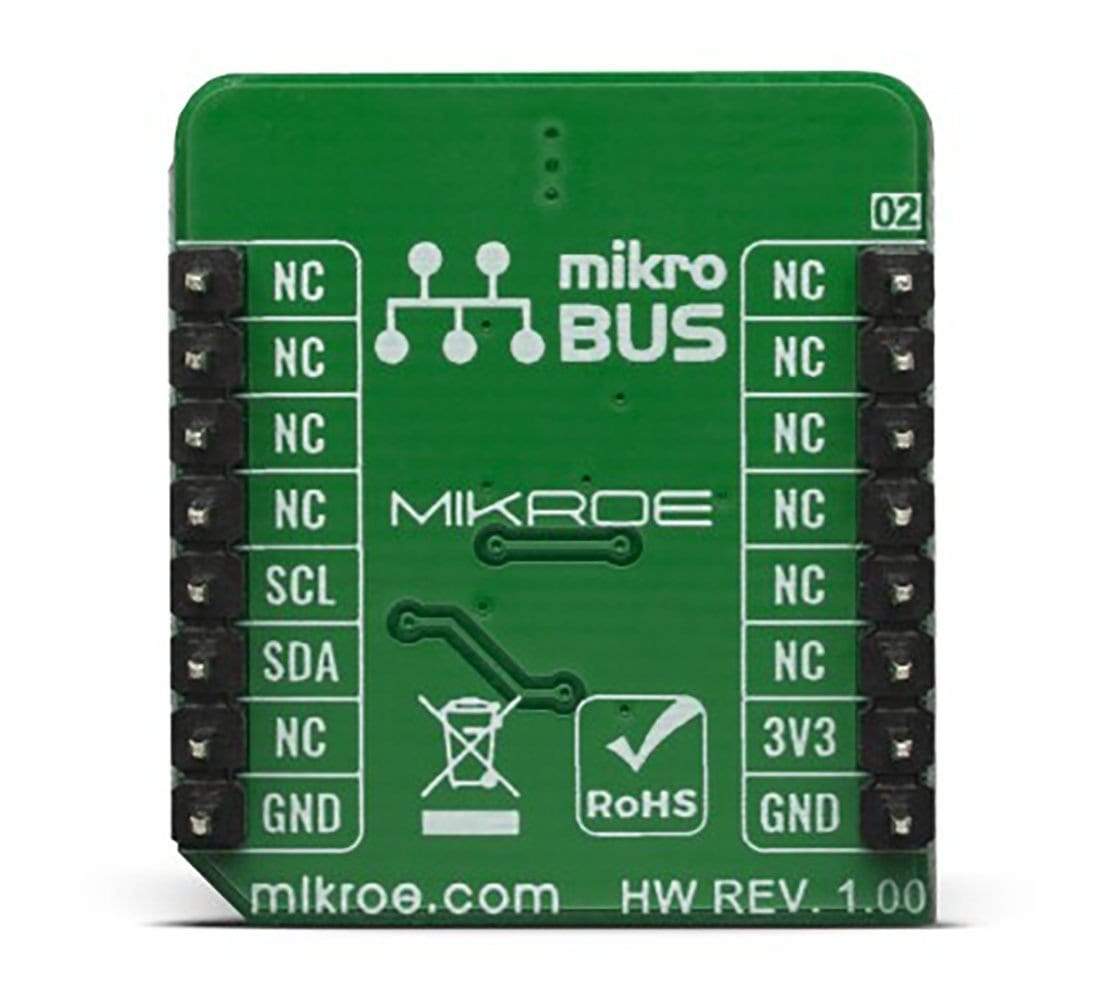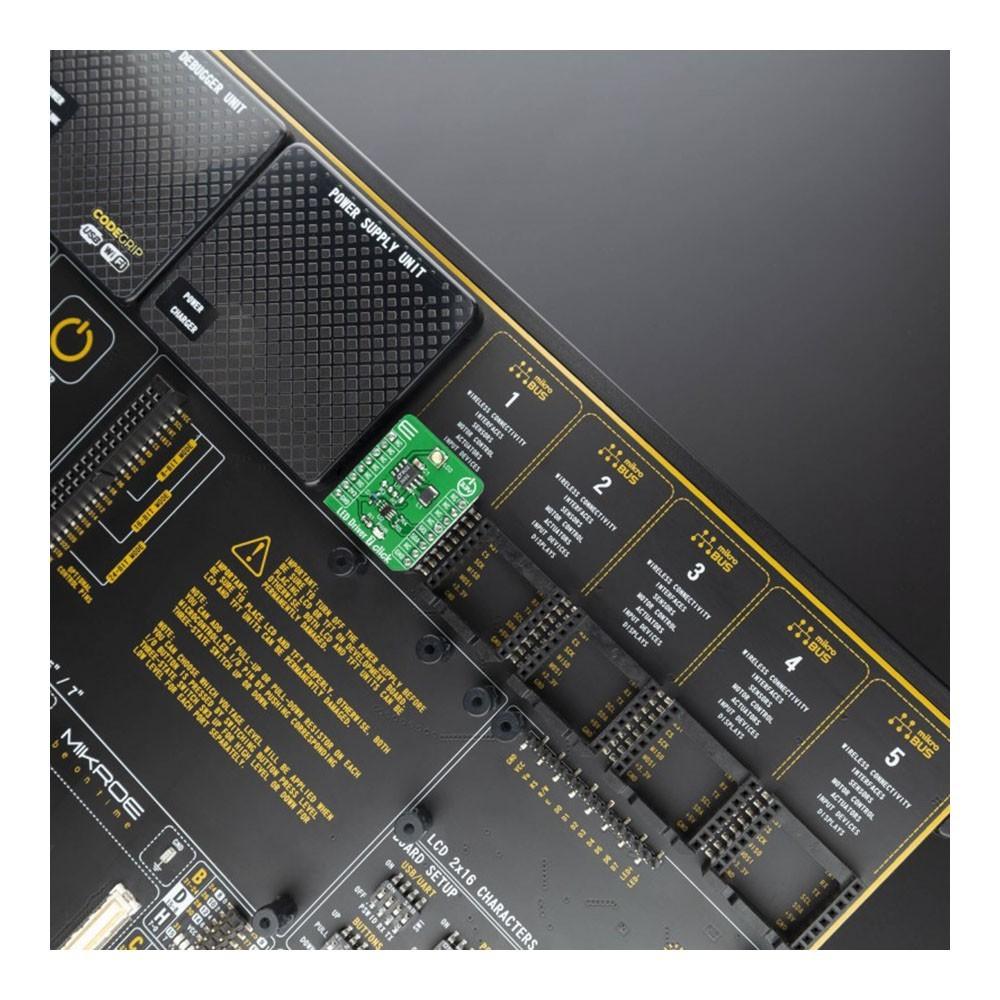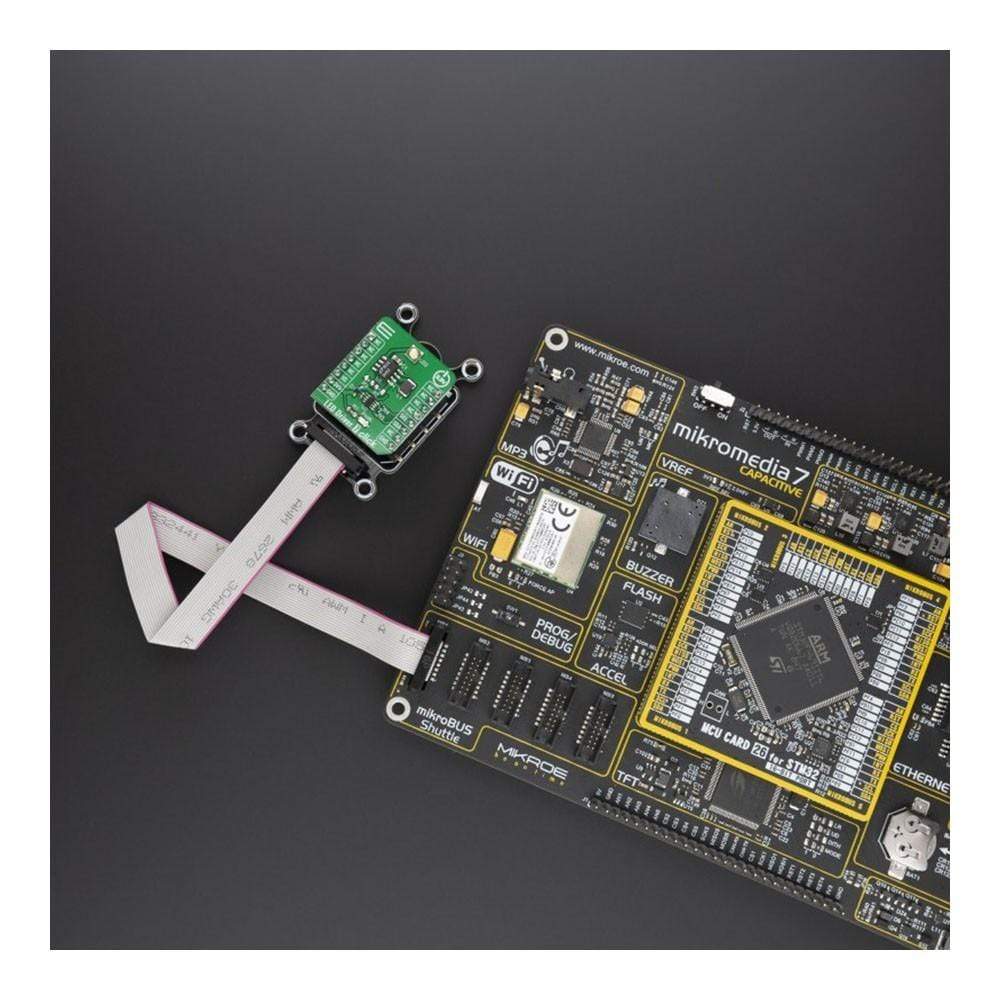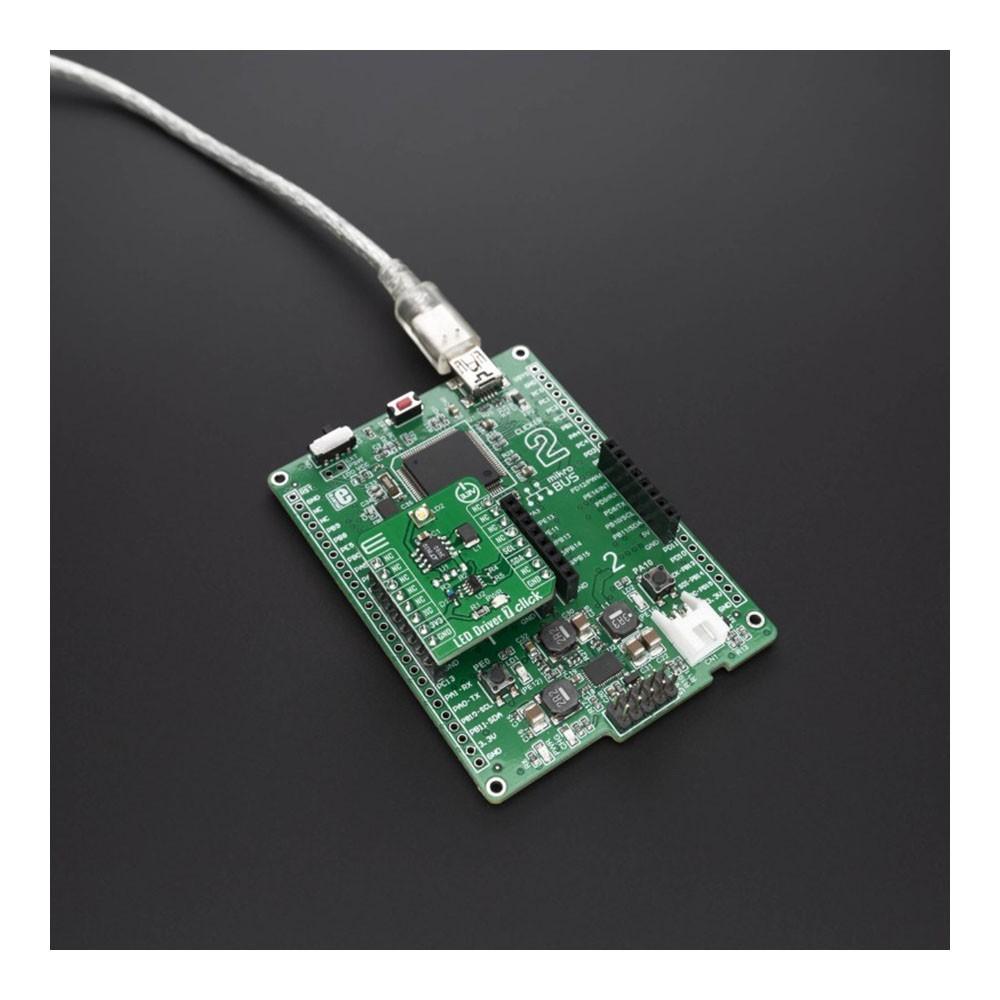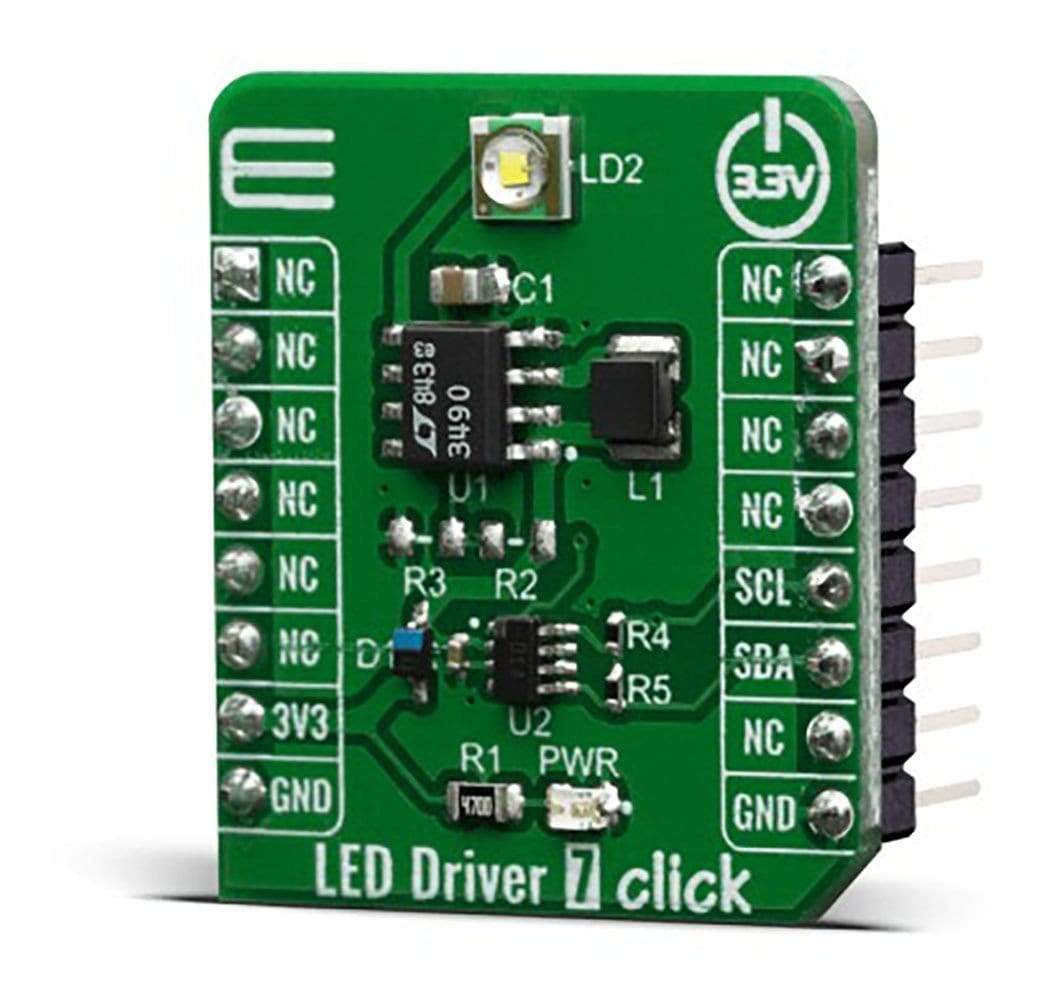
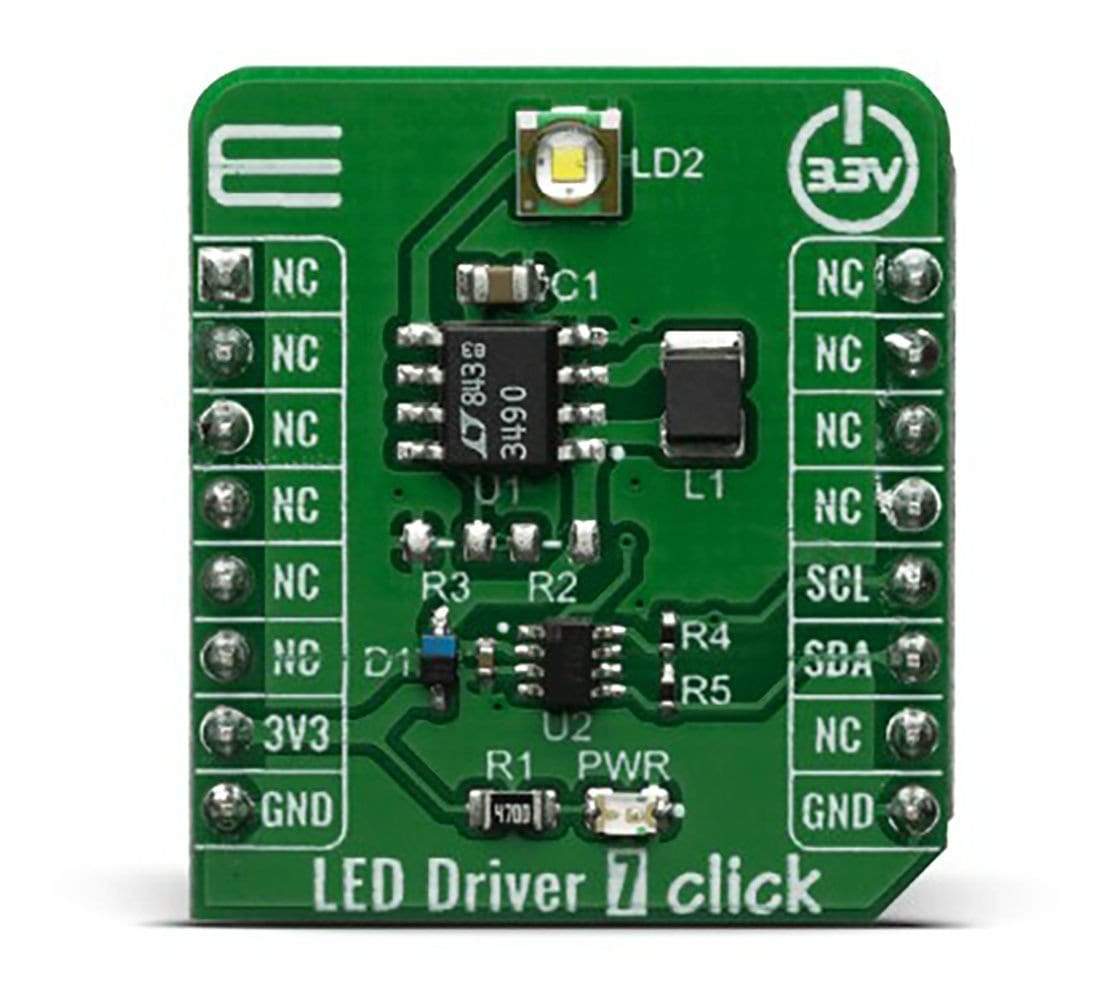
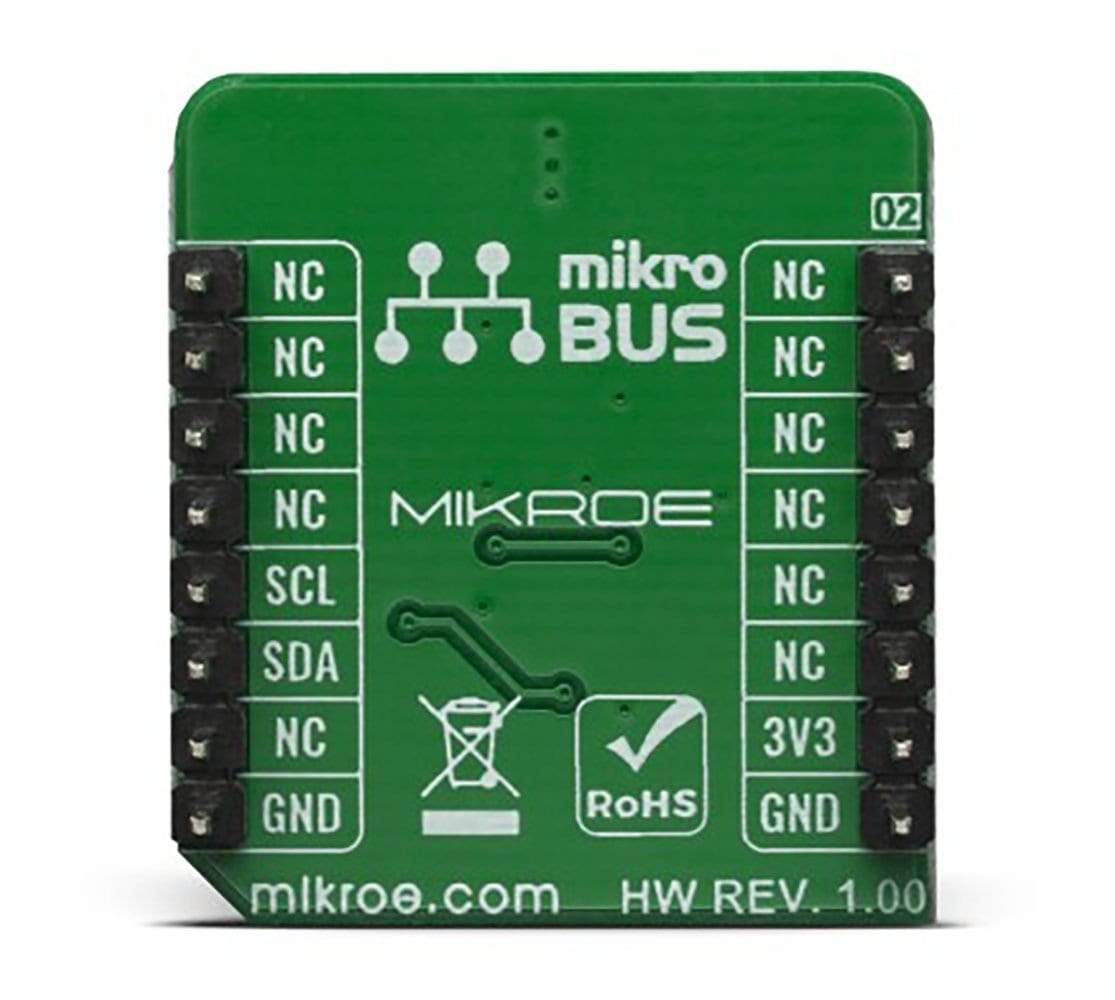
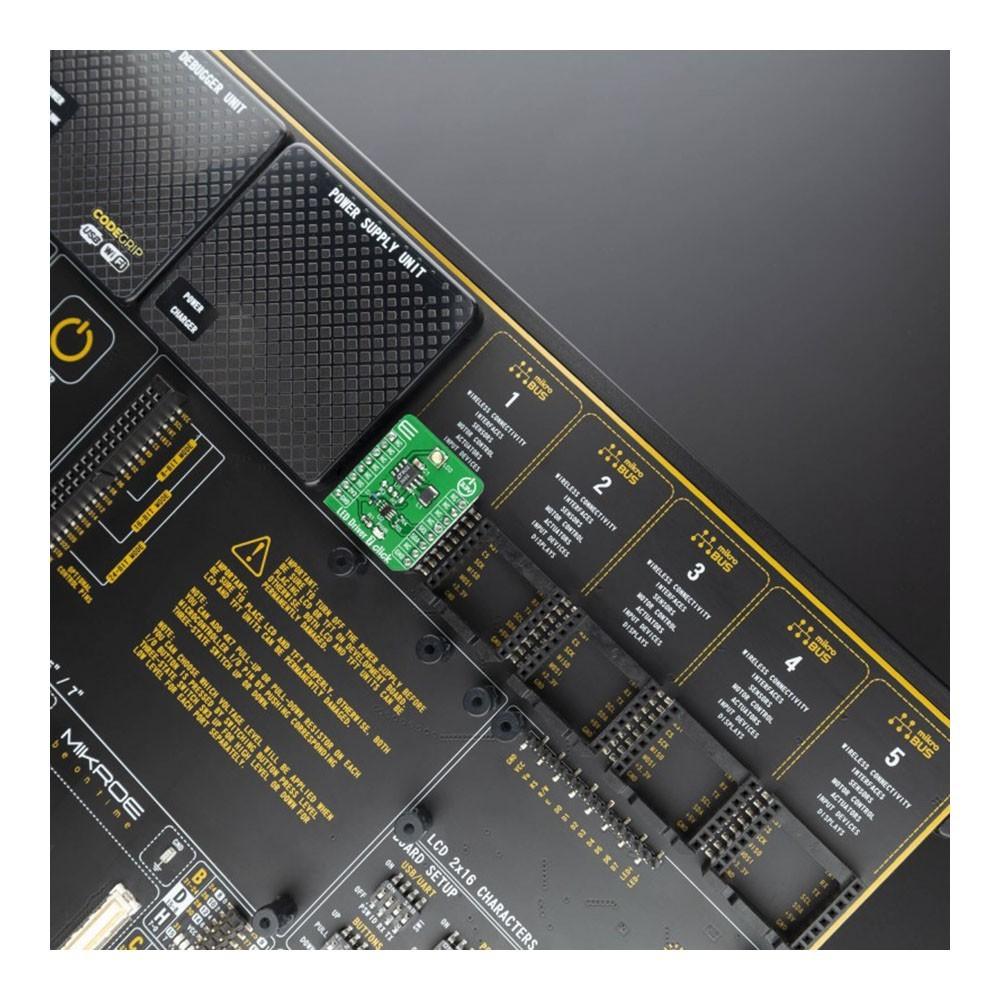
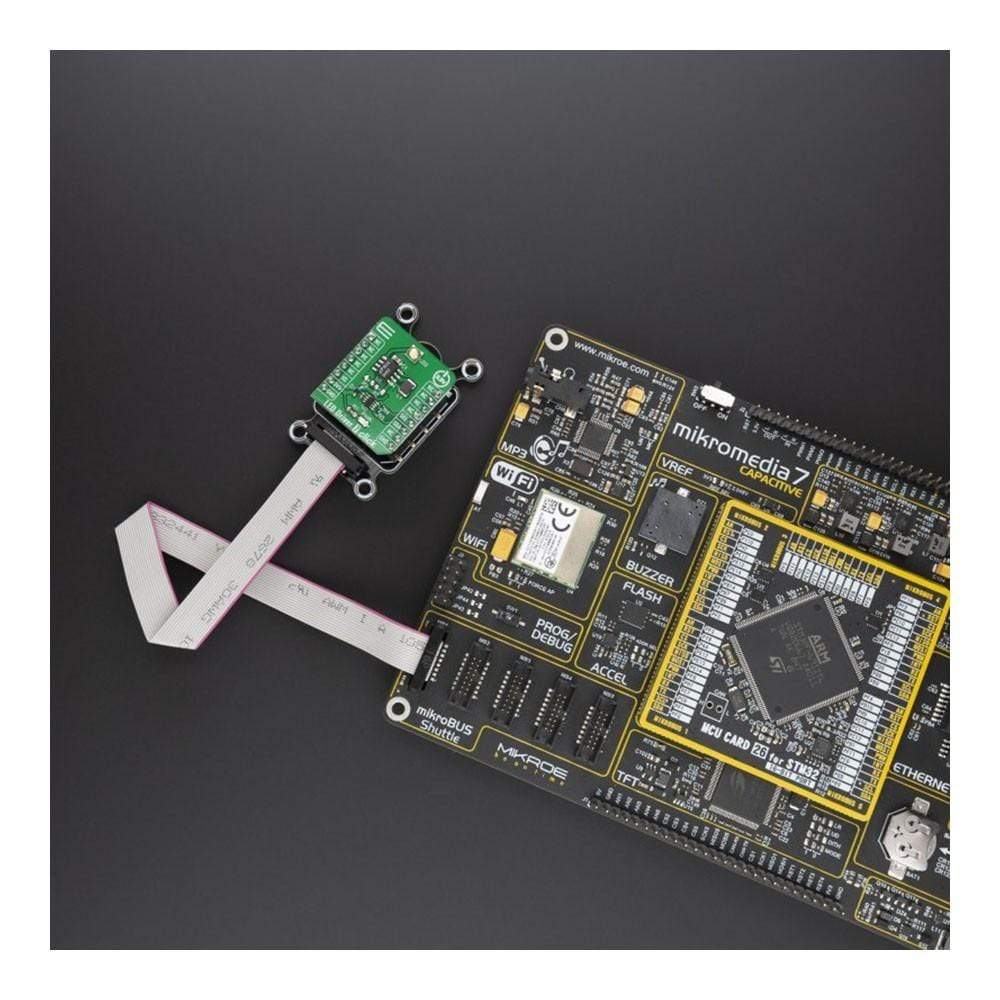
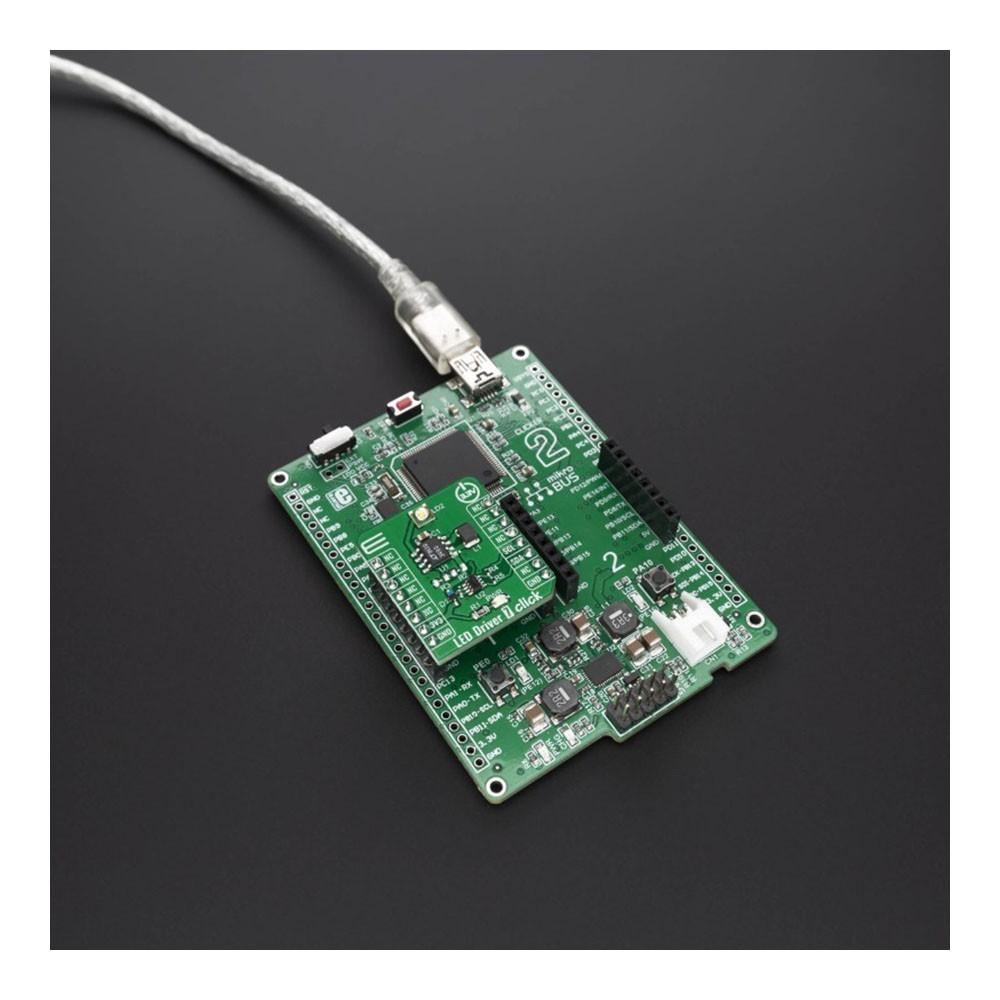
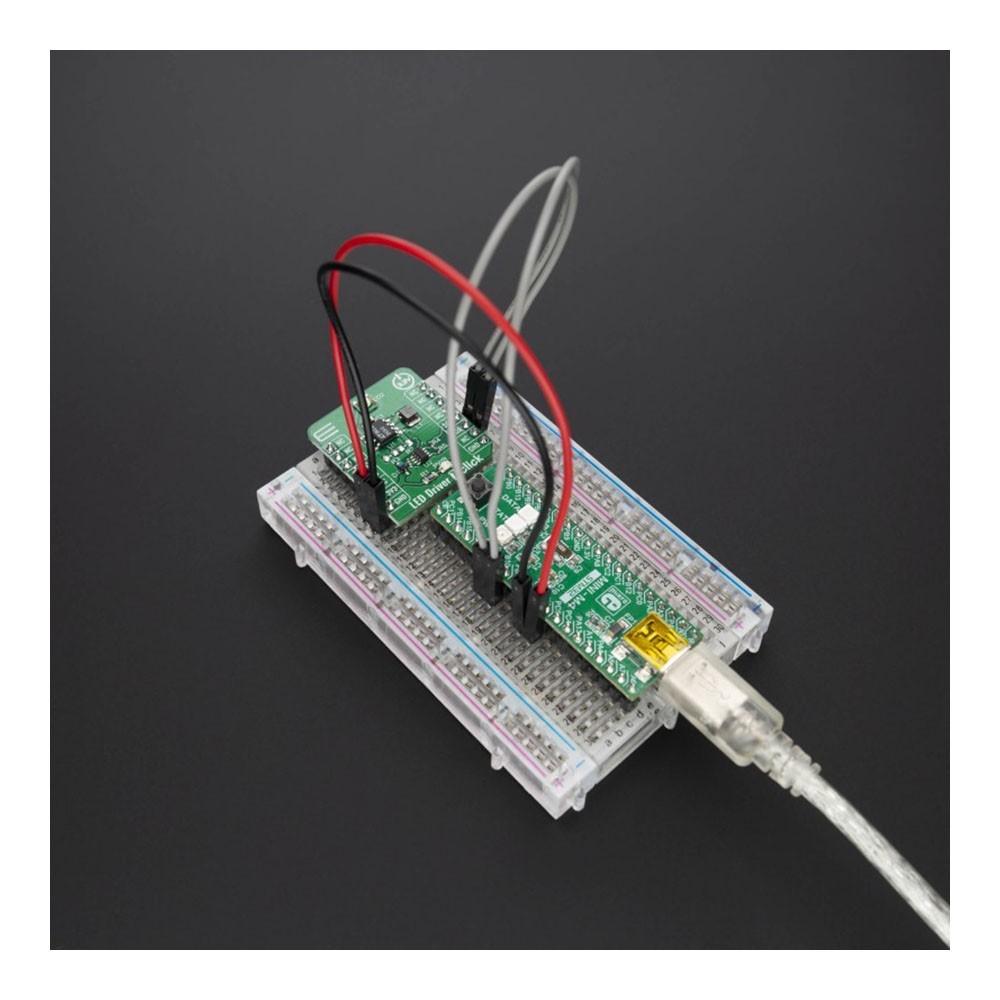
Overview
The LED Driver 7 Click Board™ is equipped with the LTC3490, single-cell 350mA LED driver from Analog Devices. The LED Driver 7 Click Board™ can be used for portable lighting, rechargeable flashlights, system calibrations, electronics level settings, automotive electronics adjustments, mechanical trimmers and potentiometer replacements. The LED drive current can be reduced by changing the voltage on the CTRL/SHDN pin with AD5171, a 64-position OTP digital potentiometer from Analog Devices (ADI).
Downloads
How Does The LED Driver 7 Click Board™ Work?
The LED Driver 7 Click Board™ features the LTC3490, single cell 350mA LED driver from Analog Devices. It provides a constant current drive for 1W LED applications. It is a high efficiency boost converter. Some of its key features include the 350mA Constant Current Output, Fixed Frequency Operation: 1.3MHz, Low Quiescent Current: <1mA and Dimming Control.
.jpg)
The LED Driver 7 Click Board™ also features the AD5171, a 64-position OTP digital potentiometer from Analog Devices. The AD5171 is used for changing the voltage on the CTRL/SHDN pin. This voltage can control the LED drive current from 0mA to 350mA. The AD5171 uses fuse link technology to achieve the memory retention of the resistance setting function. OTP is a cost-effective alternative over the EEMEM approach for users who do not need to reprogram new memory settings in the digital potentiometer. This device performs the same electronic adjustment function as most mechanical trimmers and variable resistors. The AD5171 is programmed using a 2-wire, I2 C®- compatible digital control. It allows unlimited adjustments before permanently setting the resistance value. During the OTP activation, a permanent fuse blown command is sent after the final value is determined, freezing the wiper position at a given setting (analogous to placing epoxy on a mechanical trimmer).
Given the options its features offer, the LED Driver 7 Click Board™ is ideally used for Portable lighting, rechargeable flashlights, system calibrations, electronics level settings, automotive electronics adjustments, mechanical trimmers and potentiometer replacements.
The LED Driver 7 Click Board™ is designed to be operated only with 3.3V logic level. A proper logic voltage level conversion should be performed before the Click Board™ is used with MCUs with logic levels of 5V.
SPECIFICATIONS
| Type | LED Drivers |
| Applications | Portable lighting, rechargeable flashlights, system calibrations, electronics level settings, automotive electronics adjustments, mechanical trimmers and potentiometer replacements |
| On-board modules | LTC3490, single cell 350mA LED driver from Analog Devices AD5171, a 64-position OTP digital potentiometer also from Analog Devices |
| Key Features | Dimming Control, 350mA Constant Current Output, I2C-compatible digital interface |
| Interface | I2C |
| Compatibility | mikroBUS |
| Click Board™ size | S (28.6 x 25.4 mm) |
| Input Voltage | 3.3V |
PINOUT DIAGRAM
This table shows how the pinout on LED Driver 7 Click Board™ corresponds to the pinout on the mikroBUS socket (the latter shown in the two middle columns).
| Notes | Pin |  |
Pin | Notes | |||
|---|---|---|---|---|---|---|---|
| NC | 1 | AN | PWM | 16 | NC | ||
| NC | 2 | RST | INT | 15 | NC | ||
| NC | 3 | CS | RX | 14 | NC | ||
| NC | 4 | SCK | TX | 13 | NC | ||
| NC | 5 | MISO | SCL | 12 | SCL | I2C Clock | |
| NC | 6 | MOSI | SDA | 11 | SDA | I2C Data | |
| Power Supply | 3.3V | 7 | 3.3V | 5V | 10 | NC | |
| Ground | GND | 8 | GND | GND | 9 | GND | Ground |
ONBOARD SETTINGS AND INDICATORS
| Label | Name | Default | Description |
|---|---|---|---|
| LD1 | PWR | - | Power LED Indicator |
| General Information | |
|---|---|
Part Number (SKU) |
MIKROE-3917
|
Manufacturer |
|
| Physical and Mechanical | |
Weight |
0.016 kg
|
| Other | |
Country of Origin |
|
HS Code Customs Tariff code
|
|
EAN |
8606018719068
|
Warranty |
|
Frequently Asked Questions
Have a Question?
Be the first to ask a question about this.



